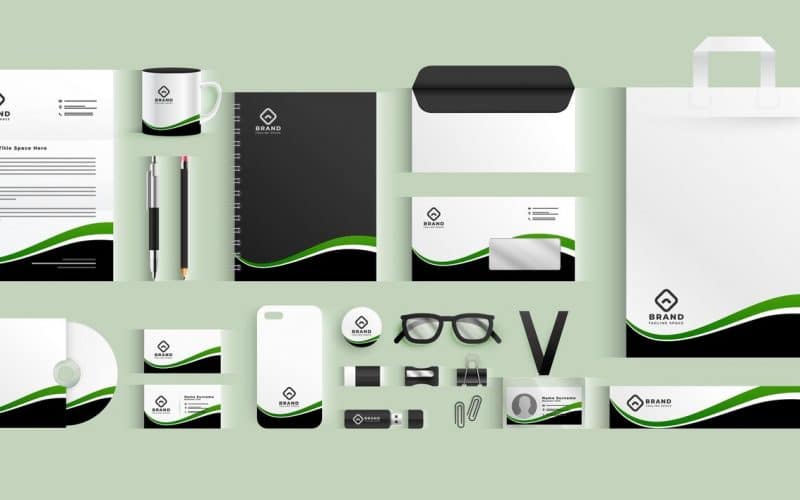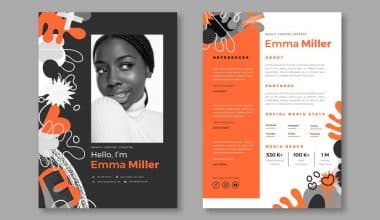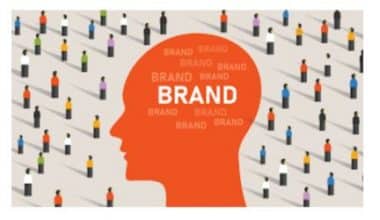What are some of your favorite brands? Perhaps it’s the golden arches of McDonald’s, the swoosh of Nike, or the bitten apple of Apple. These symbols are more than simply logos; they are the visual representation of a brand’s identity, embodying all the brand stands for. Here’s where brand identity design comes into play. But what exactly is brand identity design, and why is it so important to organizations today?
In this blog article, I’ll go into the world of brand identity design, discussing its significance, the process for creating it, and some outstanding examples that have established the gold standard. I will also examine the importance of a brand identity design firm in bringing a business’s concept to life. So, if you want to learn how to establish a memorable brand identity or why it’s important for your business, you’ve come to the right place.
Key Takeaways
- A strong brand identity encompasses a range of visual and verbal elements that collectively represent your brand’s personality and values.
- A well-designed brand identity can increase brand recognition, customer loyalty, and sales. It helps you stand out in a crowded market and create a positive impression on your target audience.
- A brand identity includes elements such as a logo, color palette, typography, messaging, and tone of voice. These elements should be consistent and aligned with your brand’s personality.
- Creating a brand identity involves several steps, including research, strategy development, creative concept generation, feedback and refinement, and finalization.
- Working with a professional branding agency can provide valuable expertise and resources to help you develop a strong brand identity. They can guide you through the design process and ensure that your brand identity is aligned with your business goals.
What is Brand Identity Design?
Brand identity design is the collection of all visual aspects that a firm creates to convey the desired image to its target audience. It is the brand’s face, consisting of the logo, color schemes, typography, and other visual elements that quickly identify a brand.
I recall when I first started my own business. The joy of selecting a logo, and colors, and deciding on the entire look and feel of the brand was evident. It wasn’t just about creating something visually beautiful; it was about developing something that resonated with my ideals and the message I wanted to convey.
The process was both exhilarating and difficult because it required a thorough understanding of what my brand represented and how I wanted it to be regarded.
Why is Brand Identity Design Important?
Imagine stepping into a store and seeing two products side by side: one with a sleek, modern design and the other with a boring, antiquated appearance. Which one would you prefer to pick up? The product with well-designed packaging is likely to attract your attention initially. This is the power of brand identity design.
A strong brand identity distinguishes your company in a congested market, increases customer loyalty, and fosters a sense of trust and trustworthiness. Lucidpress found that consistent brand presentation across all platforms might lead to an increase in revenue by up to 23%. This statistic emphasizes the necessity of developing a consistent and engaging brand identity.
From personal experience, I’ve seen how a well-designed brand identity can impact a business. When I relaunched my firm a few years ago, the new logo and visual components not only refreshed our image but also drew in a completely new demographic of clients. It was a poignant reminder that people do judge a book by its cover—and in business, that cover is your brand identity.
Logo and Brand Identity Design
Your design will shape your company’s brand identity. Your corporate design assets are the concrete pieces that shape how your brand is perceived. Examples include your logo, packaging, online design, social media visuals, business cards, and employee uniforms.
In other words, nailing your design means nailing your brand identity, which leads to developing a successful business that accurately represents who you are as a brand. So, how can you nail your design and create a brand identity that will propel your organization to the next level?
Developing your Brand Design
Before you begin generating your design assets, you must first establish the foundation of your design structure—the building blocks of your brand identity. Before creating your design assets, you need to determine the following building blocks:
#1. Typography
Typography refers to the font (or type) you use for your branding materials. It is especially vital to select logos and brand fonts intelligently. See infographics for the four main types of typography:
The typography you select will reveal a lot about your brand, so choose your fonts carefully.
#2. Color Palette
The next step is color. People, including your potential customers, have psychological attachments to different colors. Using branding colors and logo colors strategically can have a serious impact on how your brand is perceived by your audience.
#3. Form/Shape
When creating your designs, consider form and shape. This subtle but effective aspect can be used to reinforce the desired emotion from your customers: for example, a logo with all circles and soft edges would elicit a totally different response than a design with sharp and square corners.
Brand Identity Design Process
Developing a solid brand identity does not occur overnight. It’s a comprehensive procedure that includes research, brainstorming, and teamwork. Here are some common steps in the brand identity design process.
#1. Creativity and research
Understanding the brand is the first stage in the process of designing its identity. This includes researching the target audience, competition, and market landscape. It’s critical to understand what makes the brand special and how it can stand out in a crowded market.
When I was creating my brand identity, I spent a lot of time researching my competition. I wanted to know what worked for them and how I might differentiate my brand. The research process was vital in helping me determine the key components that would make my brand outstanding among others.
#2. Strategy creation
After the research is completed, the next stage is to create a brand strategy. This includes defining the brand’s mission, values, and positioning. It is about knowing the brand’s values and how it wants to be recognized by its target audience.
For my brand, the strategy creation phase focused on determining the essential values that would guide my business. I wanted to make sure that every design decision was in line with these goals, resulting in a cohesive and true brand identity.
#3. Design conceptualization
Once the strategy is in place, the design phase can begin. The creative effort begins here, with designers drawing out logo ideas, experimenting with color palettes, and selecting fonts. The objective is to design a visual identity that expresses the brand’s personality and resonates with the audience.
I recall how excited I was to see the first design concepts for my brand. It was like seeing my vision come to life on film. But it was also a time of difficult decisions, as I had to select between various design directions and ensure that every detail was perfect.
#4. Refinements and reviews
Once the first designs are completed, it is time to refine them. This entails getting feedback from stakeholders and implementing the necessary changes. The goal is to refine the designs until they properly capture the soul of the brand.
In my experience, the polishing phase was both tough and enjoyable. It was about gathering feedback from my staff and clients, and ensuring that the final designs were not just visually catchy but also aligned with the brand’s goals.
#5. Finalization and execution
The final phase in the brand identity design process is to finalize the designs and roll them out across all brand touchpoints. This encompasses everything from the website and social media to packaging and marketing backing.
Brand Identity Design Examples
Brand identity design takes a lot of time and effort, but it pays off in terms of enhanced brand identification, brand awareness, and, eventually, revenue. Here are a few brands that demonstrate this notion.
#1. Patagonia
Patagonia’s brand identity design is heavily influenced by environmental activism and sustainability, giving it a prime example of a brand with a strong, unique identity.
- Mission-driven brand: Patagonia’s mission statement expresses an explicit commitment to environmental preservation. This clear, purpose-driven aim resonates with environmentally conscious consumers who value sustainability.
- Transparency and authenticity: Patagonia’s supply chain is transparent, with fair labor practices and sustainable material sourcing. Their website includes thorough information on their factories, materials, and environmental impact.
- Activism and advocacy: Patagonia aggressively promotes environmental problems through its platform, raising awareness and driving change. They take aggressive positions on climate change, public land protection, and sustainable agriculture.
- Durability and performance of their products: Patagonia’s products are known for their high quality, durability, and performance, which appeals to outdoor enthusiasts looking for dependable gear. They develop sustainable materials and industrial procedures.
- Brand colors and logo: Patagonia’s natural-inspired color range includes earth tones and bold outdoor colors. This is consistent with their commitment to the environment and outdoor experience, resulting in a visual identity that connects with their target demographic.
#2. Ben & Jerry’s
Ben & Jerry’s has built a great brand identity by combining fun and creativity with a strong commitment to social justice and sustainability. Their distinctive approach to branding distinguishes them in the competitive ice cream business.
- Fun and creative product names: Ben & Jerry’s is well-known for its inventive and frequently comical ice cream flavor names, which represent the brand’s fun and quirky personality. Flavors such as “Cherry Garcia,” “Chunky Monkey,” and “Phish Food” not only stand out on store shelves but also provide customers with a memorable and engaging brand experience. These names frequently include references to pop culture, music, and humor, making the brand more approachable and entertaining.
- Strong community engagement: Ben & Jerry’s connects with communities through grassroots projects and partnerships with local organizations, demonstrating their dedication to local social change. For example, its “Caring Dairy” program engages farmers directly to encourage sustainable agriculture methods.
- Distinctive visual identity: Ben & Jerry’s has a distinct visual identity, with bright, colorful packaging and whimsical graphics that represent the brand’s lighthearted and approachable demeanor. Visual consistency across products improves brand awareness.
- Brand colors and logo: Ben & Jerry’s brand colors and icons are colorful, with brilliant blues, greens, and yellows. These colors generate thoughts of excitement and playfulness, which corresponds to their positive and creative brand image.
#3. Hinge
Hinge’s brand identity revolves around the idea of being a dating app that is meant to be discarded. This distinctive positioning distinguishes it from other dating apps by prioritizing genuine partnerships above casual encounters.
- Unique value proposition: Hinge’s tagline, “Designed to be Deleted,” reflects the company’s goal of cultivating long-term connections, distinguishing it from other dating apps that focus on casual matches.
- Authenticity and focus on smooth user experience: Hinge encourages extensive, insightful profiles with prompts like “Two Truths and a Lie,” which promote genuine interactions. Their minimalist, user-friendly design creates a quiet, pleasant ambiance that contrasts flashy apps.
- Emotional connection: Marketing initiatives, such as “Let’s Be Real,” emphasize real-life success stories in order to develop emotional ties with users and increase trust and credibility.
- Innovative features: The “We Met” feature allows users to share comments after a meeting, allowing Hinge to improve matches and show a commitment to users’ success outside the app.
The brand’s consistent messaging, intelligent design, innovative features, and distinctive branding components such as colors and logos all contribute to a unified and engaging user experience that inspires brand loyalty and trust.
Brand Identity Design Company
Working with a brand identity design firm may be transformative for organizations wishing to build or renew their brand identity. These firms specialize in transforming a brand’s vision and values into a unified visual identity.
Why Hire a Brand Identity Design Company?
While some organizations may prefer to manage their brand identity design in-house, collaborating with a professional design firm can provide numerous benefits. These companies offer a wealth of knowledge and skill to the table, ensuring that the final brand identity is both visually appealing and strategically aligned with the brand’s objectives.
Our Brand Style Guide Template will help you maintain consistency across all your marketing materials, strengthening your brand’s identity and building trust with your audience.
What are the 7 steps to brand identity?
How to create a brand identity in 7 steps:
- Determine your brand’s core values
- Identify your brand’s personality traits.
- Conduct market research.
- Create buyer personas.
- Crafting an effective logo design.
- Choose a brand color palette, typography, and imagery.
- Define your brand’s origin story.
- Incorporate emotional appeal.
What are the 5 pillars of brand identity?
Purpose, Perception, Personality, Position, and Promotion are the five Brand Pillars that serve as the foundation for your brand and inform every audience touchpoint and experience. You can shape your brand identity utilizing the 5 Ps to make it the most profitable asset your company owns.
What is brand identity design vs brand design?
Your company’s brand is abstract, but your brand identity is material. Brand identity manifests itself in the form of real (and digital) goods such as stationery, brochures, books, signage, garments, and anything else that can be identified by your brand’s logo.
What should a brand identity include?
Brand identity is the specific design and messaging a company uses, including logo, color scheme, typography, voice, and tone.
Conclusion
Brand identity design is an important part of any successful firm. By investing in a strong brand identity, you can establish a long-term relationship with your clients, distinguish yourself from competitors, and meet your business objectives.
What are your ideas about brand identity design? Have you used a branding company to create your brand’s identity? Share your experiences in the comments section.
Related Articles
- Brand Purpose: A Guide to Defining Your Company’s Mission
- Expert Tips to Measuring Brand Equity in 2024 (Detailed Guide)
- Small Business Branding Ideas: 15 Creative Ideas for 2024
- How To Do Rebranding Campaign Effectively: Expert Ideas!!
- The Importance of Branding in Financial Services (+ Examples)






